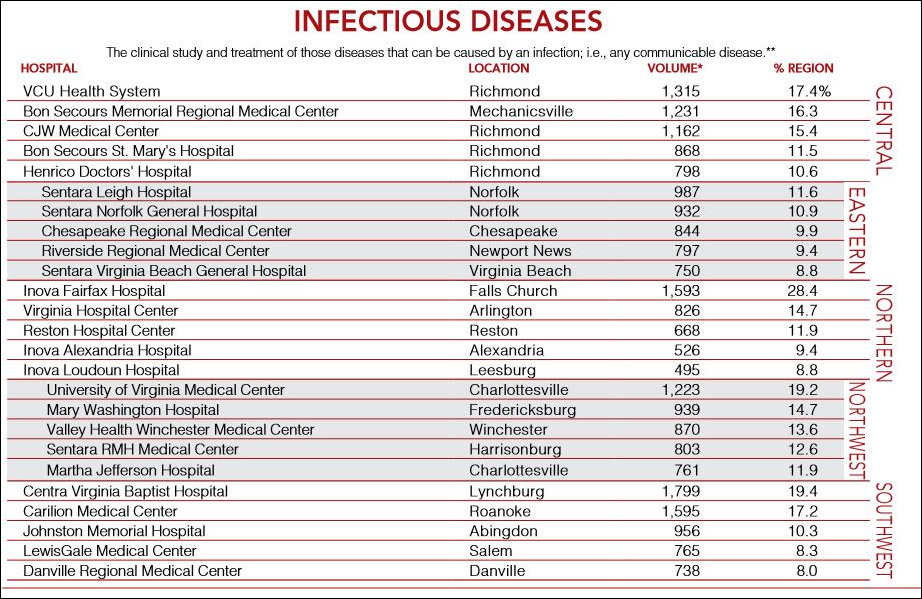
Click for larger image. Graphic credit: Virginia Business
I apologize for being obsessive on the subject of hospital-acquired infections recently (see here and here) but I just heard a story today of someone who went into Duke University hospital for a routine colonoscopy and contracted a case of flesh-eating bacteria. This was Duke! Supposedly one of the top hospitals in the country!!
Virginia Business magazine has published data on the volume of infectious diseases treated at Virginia’s larger hospitals in 2015. The data comes from the Virginia Health Information Foundation.
Note: The data does not necessarily reflect infectious diseases acquired in the hospital. Here’s how VHIF describes the data set:
These diseases can be transmitted from human to human, from animal to human, by direct or indirect contact; e.g., fevers of unknown origin, sexually transmitted diseases (including HIV infection), herpes, central nervous system (CNS) infections, measles, rubella, mumps, hepatitis, rabies, and rickettsial infections (such as Rocky Mountain spotted fever). Bacterial infections such as streptococcal and chlamydial infections also fall under this classification, as well as those of spirochetal, protozoal, helminthic and mycotic causes.
The total is not quite 38,000. That strikes me as a remarkably low number for all infectious diseases. Perhaps most of these diseases are treated by primary care doctors. The million-dollar question: How many of these cases, if any, were contracted in a hospital setting?


